




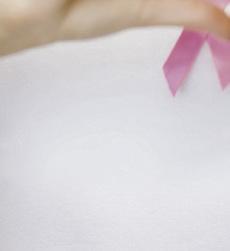















IBy Amanda McElfresh |amcelfresh@theadvocate.com
Thisarticle is brought to youby OurLadyofLourdes Health
t’sthe second most common cancer affectingwomen in theU.S., andit’s thesecondleadingcause of cancer deathfor womeninthe nation.So, it’s no surprise breast cancer is beingstudied continuously,withnewer treatments routinelybeingdeveloped andreleased.
That’saccordingtoWissamHanayneh, MD,aboard-certifiedand fellowshiptrainedcancer specialist with theOur Lady of Lourdes JD Moncus Cancer Center Newerclasses of medications called antibody drug conjugates, forexample, arechemotherapy medicines designed to targetand deliverchemotherapy specificallytocancer cells. Anotherclass of medications called “immunotherapy,” Dr.Hanayneh explains, arerevolutionizing what oncologists aredoing ever yday to treataggressivebreastand othercancers.
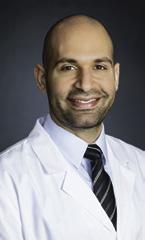
“They sort-oftakethe brakes off your immunesystem. It allows your immune systemtoessentially seethe cancer andfightit,”hesaid. “Overthe past 20 years, thereare so many success storiesinthe breast cancer world that keep pushingthe envelope forwardand providingbettercurerates, better survival rates.”
Dr.Hanayneh,who trainedatthe prestigiousMoffittCancerCenterin Tampa, recentlysat down with theAcadianaAdvocateto discussthese revolutionary treatments andother advancements inthe diagnosisand treatmentofbreastcancer in Acadiana. Providingworld-classcancercare closetohomeallowspatients here to stay closetofamily, friends andother lovedones.
Patients whomaintainastrongbondwithfamilyand faith“areabletogo throughall theuncertainty that comeswithhavinga cancer diagnosis, yet stillkeepmovingfor ward,” Dr.Hanaynehexplained.“ That’sa very inspiring thingtosee.Ithelps me be abetterdoctorfor them.”
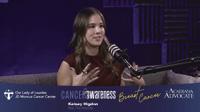


“You’reabletoget world-class care whilestillbeingaround [your] families, withouthaving to travel forhours.”
“New classesofdrugs called antibodydrugconjugates...ver y specificchemotherapydrugs that target thecanceritself, have reallybeenrevolutionizingwhat we do.”
On Immunotherapy: “[Immunotherapy]take[s] the brakes off of your immune system...itallowsyourimmune systemtoessentially seethe cancer andfightit.”




By Stevie Cavalier Licciardi |stevie.licciardi@theadvocate.com
Thisarticle is brought to
youby OurLadyofLourdes Health
BrandyMiddlebrooks isn’tjustsur viving She’sthriving. “Myhusband andI celebrate ever yday,” themotherofthree shared with an infectioussmile.“When thewinds come,we’re together.Whenthe wins come,we’re together.You can’task forbetterthanthat!”
Winds of Change
AJennings native andlongtimeresident of Richard, Middlebrooks, 48, hada tumorremoved from her rightbreastinearly 2000. Testsconfirmedthe growth wasnoncancerous. Whileworking as thelibrarian at CrowleyHighSchoolinOctober 2022,Middlebrooks noticedalumpwitha bruise near wherethe tumorwas removedpreviously.
“I knew somethingwas there, butI triedtrickingmy brainintodenying it after ever ything Iwentthrough 22 yearsearlier,” she explained.“Iknewthe bruise was notnormaland Icouldn’t putoffgetting tested any longer.”
Ascreeningmammogram,and laterabiopsy, confirmed herworst fears. Middlebrooks hadstage 2breastcancer.Further testingrevealeditwas triple negative breast cancer,whichaccounts for10-15% of all breast cancersand is often more aggressive
KnowYour Enemy
Middlebrooks, like so many otherpatients, immediatelyimmersedherself in anything theinternet hadtoofferonthe subject. Most of what shefound eventually wasdetermined to be incorrectoroutdated. “Itwas so over whelming,”she said.“Ibelievedthere wasnothingthatcould be done fora triple negative diagnosis, butthatwasn’ttrue.”
Unlike most breast cancers, triple negative breast cancer does notrespond to anti-estrogen therapies, accordingtoDr. Gene Brierre,acancerspecialist with OurLadyofLourdes JD Moncus Cancer Center whooverseesMiddlebrooks’treatment andrecover y. However, anewer option, immunotherapy,ischanging theway oncologists approach breast cancer treatment.
“Whenadministered in tandem with chemotherapy,” Dr.Brierre explained,“immunotherapy hasbeen shown to significantlyimprove survival ratesand to reduce recurrence in patients with triple negative

breast cancer.”
By thetimeMiddlebrooks begantreatment in Januar y2023, thetumor in herright breast was considered large, andthe cancer hadspreadtoone of herlymph nodes under herarm.Fortunately hertreatment beganjustasimmunotherapy,which utilizes thepatient’sown immune system to target andfightcancer cells, wasestablished as astandard of care.Middlebrooks receivedthe revolutionar ynew treatmentalong with 18 rounds of chemotherapy
“Thegoalofimmunotherapy wastoshrinkthe tumor—that wasthe hope,” said Middlebrooks.“Iwas blessedthatitnot only shrunk thetumor forme, but thetumor wascompletelygonebythe time Iwentinto surger ytoremovethatbreast.
TheSearchfor ‘Normalcy’
At many points alongthe journeyMiddlebrooks felt shecouldn’t controlanythingthatwas happening around herand to her. Yet, therewas onethingshe was determined to decide forherself.“Iwantedtocontrol when Ishavedmyhead,”she shared.“Cancer took so much from me.This wasone thingIhad over cancer.I didn’t let it take my hair.I took my hair.”
Middlebrooks’eldestson wasplanninghis wedding Herdaughterhad just starteddoctoralstudies in physical therapy in Shreveport.Her youngest son beganclasses at SOWELATechnical Community CollegeinLakeCharles.So, Middlebrooks shopped forthe perfectwigs forthe upcoming weddingand ever yday life.
“I wasn’t goingtolet adiagnosis slow me down,” Middlebrooks explained.“Looking at thepictures now, you’dnever know Iwas so sick.I just gave it up to God. Ilet Himtakecontrol.I receivedblessing after blessing.That’s all Him.”
After chemotherapy came amastectomyand 35 rounds of radiationtherapy,aprocessthatleft Middlebrooks mentally,physicallyand spiritually exhausted.Reconstructionmeant more surger y. Middlebrooks wasn’t prepared to face it,evenwiththe over whelming supportthatsurroundedher at work, at home andatchurch. SheconfidedinDr. Brierre, leaningonthe trustshe developedinhim over the course of hertreatment
“Dr. Brierre told me,‘You’re notgoing to realize how much youwantthisunlessyou do it.’ But, ultimately
he left thedecisionuptome,”Middlebrooksexplained “It’snot untilyou arecancer-free that youcan even really thinkabout it.Then you’re so tiredand just want normalcy back.But I’msogladIdid it.The reconstruction helped me feel normal again.”
Family,Faith and Forgiveness
Middlebrooks has been cancer-freefor thepasttwo years. Whilethe treatmentjourney wasarduous,she managedtofind hope andhealing in thepositivityshe surrounded herselfwith. Herfamily, friends, andfaith communityprovedtobeaconstantsourceofstrength, as did thephysiciansand nurses at theJDMoncus Cancer Center
“I can’ttellyou howmanyfriends told me Iwas blessedtohaveDr. Brierreasmyoncologist. Ifeellike I’mthe luckiest person in theworld,” Middlebrooks said.“He is awonderfuldoctorand thestaffworking with himare excellent. Theymakeyou feel as though they areyourbestfriend—that they areonyourteam. Iknowtheydothisevery day, andothersringthe bell too, butitwas such aspecial connection forme.”
The denial andprocrastination Middlebrooks gave into forsomanyyears couldhavepainted amuch differentoutcome forher.But,she said,you can’tfocus on thenegative.You have to be positive to surviveand thrive after acancerdiagnosis
“Not gettingtestedfor so long,thatwas on me.Ihad to forgivemyself,”Middlebrookssaid. “Put yourself andyourhealthfirst. Findthe blessingsinevery day. TrustGod.Itall sounds so simple,now.Cancerisnot a deathsentence, anditdoesn’t have to be.”
Formoreinformation on OurLadyofLourdes JD Moncus Cancer Center,visit fmolhs.org/locations/ acadiana/our-lady-of-lourdes-jd-moncuscancer-center or snap theQRcode.



One Conversation at aTime—How the High-Risk Breast Cancer Clinic at Our Lady of Lourdes is transformingpreventativecare
By Stevie Cavalier Licciardi |stevie.licciardi@theadvocate.com
Thisarticle is brought to youby
OurLadyofLourdes Health
Breasthealthisapersonaljourney.Eachperson’s path is lined with differentsigns,milemarkers andquestions–DoIhaveagreater risk of developing breast cancer? When should Istart screeningmammograms? Should annual testing involvemoreadvancedimaging?It’snowondermany feel findingthe rightanswers seemsdauntingand difficulttonavigate.
Acadianawomen have anew resource to help them make senseofitall andfind theright path forwardfor their personal health needsand lifestyle. The HighRisk Breast Cancer Clinic at OurLadyofLourdes JD Moncus Cancer Center offersa dedicated space to continue conversationssparked by concerns over family histor y, personal risk factors,orprior screeningresults. Thisspecializedclinicser vesasacrucial intersection betweenthe many medical disciplines involved in breast cancer care andempowerswomen to take aproactive approach to managing their risk “Breasts canbesuper confusing, and patients often don’tknowiftheyshould be talkingtotheir OB-GYN, primar y care doctor,ortheir surgeon,ifthey alreadyhaveone,” said KellyCrim, a women’shealthand adultgerontology nursepractitioner wholeads theHighRisk Breast Cancer Clinic at OurLady of Lourdes. “It’sgreat to have abreast specialist whodeals specifically with questionsinthatarea. Itellmypatients, if youhaveany questions, call me.”
in their family or if their mammogramresults list a Tyrer-Cuzickscore of 20%ormore. Even before their first mammogram, whichistypically recommended at age40, womencan utilize theonlineTyrer-Cuzick risk assessment calculator to receive an estimatedrisk by inputtinginformation regardingtheir reproductive past andfamilyhistory,Crimsaid. Afamilyhistory of ovarianand prostate cancer is also importanttonote in theriskassessment, she added, as it cansignalan increasedriskofbreastcancer
Beginningwiththe first appointment, theHighRisk Breast Cancer Clinic seekstocultivate arelaxed conversational environment. As Crim walksthrough theTyrer-Cuzickquestionnairewithapatient, she becomesfamiliarwiththeir personal andfamily
then he couldbeacandidate forgenetic testingto determine if hisdaughters mightbeathighrisk.”
The High-RiskBreastCancerClinicemphasizes theimportanceofongoing communicationbetween healthcare providersand patients. Patients are encouragedtocontinueseeingtheir OB-GYN on an annual basisand to visitthe clinic once ayear forcomprehensivemonitoring. Whilethe primar y goal of theclinicisearly detection of breast cancer, risk reductionstrategiesare an importantpartof theconversation. Most casesofbreastcancerare notpreventable,however,detecting it in theearliest stages has been showntosignificantlyincreasepatient outcomes andsur vivalrates

Akey factorindiscerninganindividual’sriskis family histor y. Othercontributingelementsinclude thetimingofpuberty,menopause,and childbirth, Crim explained.Indetermining if someoneisat increasedrisk, theclinicusesthe widely accepted Tyrer-Cuzickriskassessmenttool, whichcombines data from adetailedreproductivehealthquestionnaire, family histor y, andmammogram resultstoestimatea woman’slifetimeriskofdevelopingbreastcancer. Crim encourageswomen to make an appointment if they areaware they have ahistory of breast cancer
histor yand canofferrecommendations forany needed testing. Often forthose at agreater risk,for example,a breast MRI or ultrasound will be scheduledinaddition to an annual mammogram. Crim coordinates any necessary referralsand candetermine if apatientis eligible forgenetic testing—a processthatchecksDNA forgenemutations that mayilluminateanincreased breast cancer risk
“Men don’tthinkabout breast cancer as much as women, andtheir personal risk of developing it is much lower,”Crimsaid. “However,ifthere is alarge family histor yofcancer on themalesideofthe family,
Breast cancer treatmentinvolves amulti-disciplinary team that includesgeneral surgeons and/or surgical oncologists, who remove portions of diseased breast tissue. Plasticsurgeonsprovide breast reconstruction.Other specialists mayinclude medicaloncologists, radiationoncologists, pathologists and radiologists because, as Crim noted, breast cancer treatmentisateameffort
“Thebeautyofhavinganurse practitioner in this position is that I have thetimeand availability to discuss awoman’s risk in-depth,”Crimsaid. “It’salot of listeningand ensuring she feelsheard.Thereare inevitably alot of questionstheyneedanswered. Alot of encouragement is needed,aswell. I’m here when they need me,and Ilet my patients know Iamaccessible.



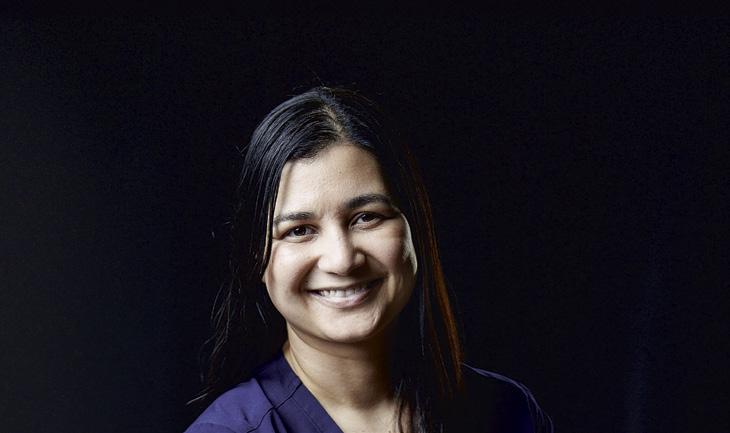
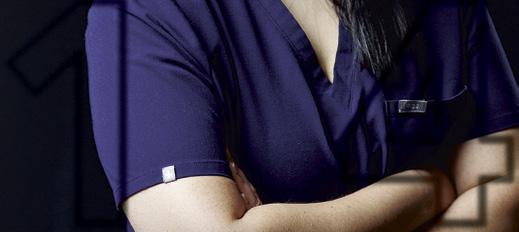



At Our LadyofLourdesJDMoncus Cancer Center, quality isn’ta goal —it’s astandardwe’ve earned.Asone of only four cancer clinicsinLouisianato receive theQOPInational quality certification, we’rerecognized for delivering safe,effective and patient-centered care.Fromdiagnosis to survivorship, we’re here to guide,treat and support you withthe excellence you deserve.That’s why we’rethe region’strusted cancer treatment destination. It allcountshere. Lear nmoreatLourdesRMC.com/cancer.
Sweekriti Adhikari, DO, Hematology and Oncology